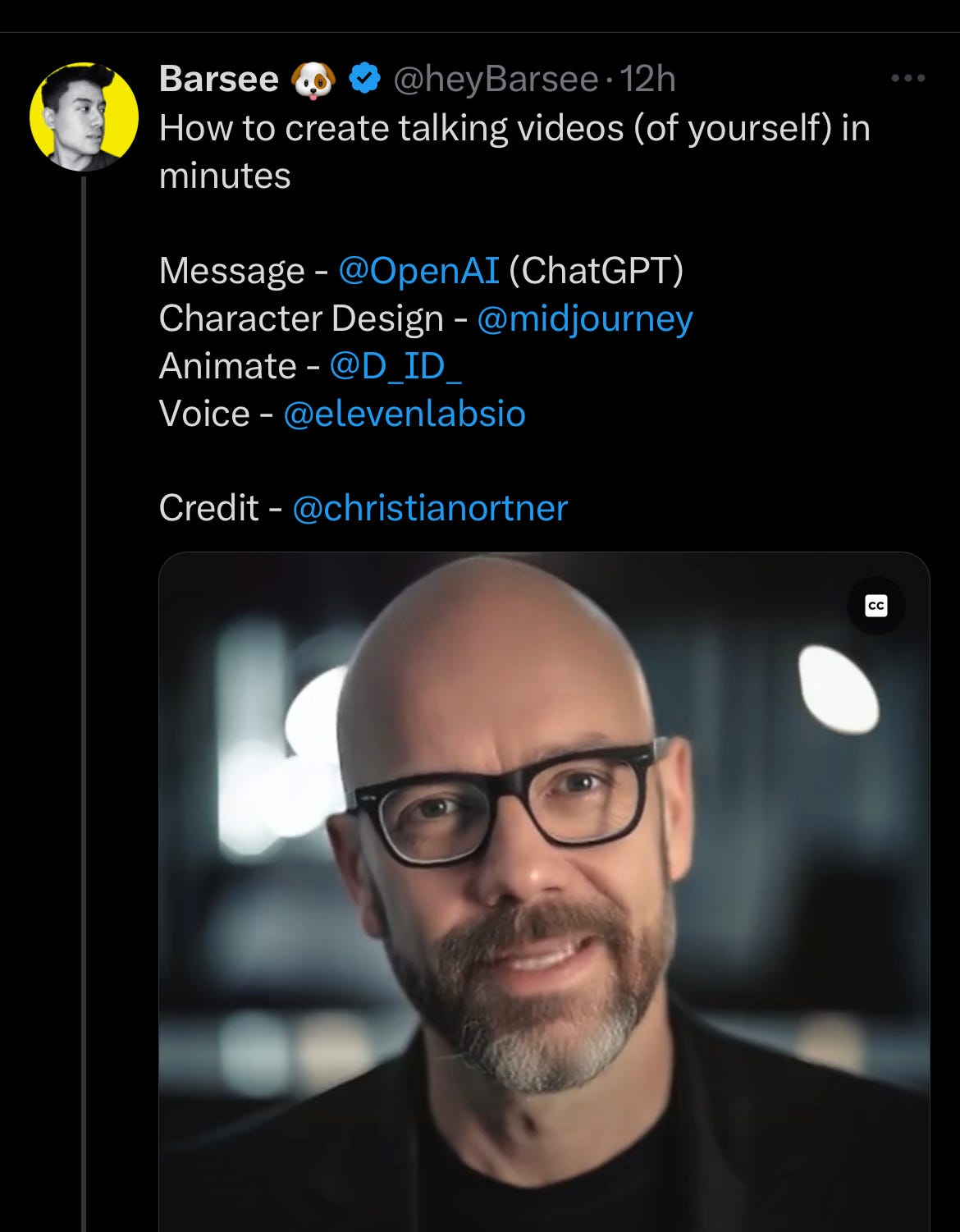AI Image Generation Is Funny Until It’s Not
Sometimes the Pope ain't so dope.
This image went viral over the weekend:
People went nuts over it and for good reason. The Pope had, in the words of the most fashion-forward among us, some crazy drip (translation: he looked very stylish).
Yet after a day or so of reveling in the look, asking whether the Pope had collaborated with Drake, and similar observations, word slowly began to leak that this was perhaps not a “real” photo, at least in the sense that we have come to know the term.
Here lies the problem from the perspective of all things legal:
What is and isn’t real is going to get much more complicated very quickly, as this tweet, that was a product of the Pope jacket meme, indicates:
This obviously comes with massive legal implications, as Philadelphia lawyer Rich DiTomaso points out:
“The entire basis of how we enter into legal agreements is knowing who we are contracting with. Artificial intelligence has the potential to set many obstacles and deeply complicate things that were once fairly simple, such as confirming identity.”
If we can’t trust our senses, which are intimately connected to who we are and what we understand, what can we trust?
How all of this manipulation is done, without diving too far into the technician pool for us regular folks, involves something called GANs and additive prompting.
Additive prompting can be used in generative models such as Generative Adversarial Networks (GANs) to help generate more realistic images. Midjourney is an example of one of these GANs.
In the context of image generation, additive prompting involves gradually refining a generated image by adding additional details or corrections. This is done by generating a series of images and adding small changes to each iteration until the desired result is achieved.
Let’s say we just want to generate a realistic image of a cat. We start with a simple image of a cat generated by the GAN, and then add additional details and corrections in a series of iterations. In the first iteration, we might add more details to the cat's fur, in the second iteration we might adjust the cat's pose, and in the third iteration we might add more realistic lighting and shadows to the image. Each iteration builds upon the previous one, resulting in a more realistic and detailed final image.
Additive prompting can also be used to generate images of specific objects or scenes by gradually adding more context to the generated image. For example, if we want to generate an image of a beach, we might start with an image of sand and water, and then gradually add more details such as palm trees, umbrellas, and people to create a more complete and realistic scene.
So if you use something that is as ubiquitous today as ChatGPT we can ask it how to do all of this and to even generate a script for us to just feed into the GAN.
This isn’t perfect yet. As ChatGPT counseled me:
The quality and realism of the final image will depend on factors such as the quality and diversity of the training data, the complexity of the generated image, and the effectiveness of the image processing techniques used to edit and refine the output.
But we are absolutely getting there, as this weekend’s Pope jacket meme should remind us for a long time to come. And if you’re still skeptical, take a few minutes to look at this facial animation tool that can turn an iPhone video into a remarkably realistic avatar.
So the caveat here is that we all need to be far more careful than we ever have been to ensure that what we read, what we hear, and what we see is actually real.
That’s a heck of a task for us humans.
As someone who likes fashion and popular culture, it honestly never occurred to me for a second when I first saw the Pope jacket image that it was AI. Sure, you can read this and make fun of me for being naive, but I simply thought that someone unintentionally designed the Pope a warm winter jacket that was far more stylish than they had imagined it would be.
That’s where AI fakery, if you want to call it that, is going to thrive. We don’t need to be worried (I hope) about an AI-generated Orson Welles War of the Worlds, we need to be far more concerned with the aggregate of subtle manipulations we’re going to see at first each month, then week, then day, then hour.
As the line between what is real and what is fake becomes increasingly opaque, there will be an incredible burden on the law (legal structures, the legal process, legislators, lawyers, and judges) to find contemporary ways to respond. In other words, the law will be asked to do something it doesn’t notoriously badly - think on its feet.
About Aron Solomon
A Pulitzer Prize-nominated writer, Aron Solomon, JD, is the Chief Legal Analyst for Esquire Digital and the Editor-in-Chief for Today’s Esquire. He has taught entrepreneurship at McGill University and the University of Pennsylvania, and was elected to Fastcase 50, recognizing the top 50 legal innovators in the world. Aron has been featured in Forbes, CBS News, CNBC, USA Today, ESPN, TechCrunch, The Hill, BuzzFeed, Fortune, Venture Beat, The Independent, Fortune China, Yahoo!, ABA Journal, Law.com, The Boston Globe, YouTube, NewsBreak, and many other leading publications.




